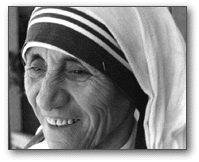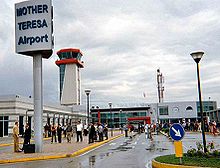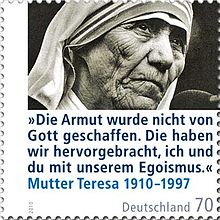
return
Pro & Contra
|
||||||||||
| Criticism of Mother Teresa |
||||||||||
Towards the end of her life, Mother Teresa attracted some negative attention in the Western media. The journalist Christopher Hitchens was one of her most active critics. He was commissioned to co-write and narrate the documentary Hell's Angel about her for the British Channel 4 after Aroup Chatterjee encouraged the making of such a programme, although Chatterjee was unhappy with the "sensationalist approach" of the final product.Hitchens expanded his criticism in a 1995 book, The Missionary Position.
|
||||||||||
| Miracle & Beatification |
||||||||||
After Mother Teresa's death in 1997, the Holy See began the process of beatification, the third step toward possible canonization. This process requires the documentation of a miracle performed from the intercession of Mother Teresa. In 2002, the Vatican recognized as a miracle the healing of a tumor in the abdomen of an Indian woman, Monica Besra, after the application of a locket containing Mother Teresa's picture. Besra said that a beam of light emanated from the picture, curing the cancerous tumor. Critics—including some of Besra's medical staff and, initially, Besra's husband—said that conventional medical treatment had eradicated the tumor.Dr. Ranjan Mustafi, who told The New York Times he had treated Besra, said that the cyst was not cancer at all but a cyst caused by tuberculosis. He said, "It was not a miracle.... She took medicines for nine months to one year." According to Besra's husband, "My wife was cured by the doctors and not by any miracle." An opposing perspective of the claim is that Besra's medical records contain sonograms, prescriptions, and physicians' notes that could prove whether the cure was a miracle or not. Besra has claimed that Sister Betta of the Missionaries of Charity is holding them. The publication has received a "no comments" statement from Sister Betta. The officials at the Balurghat Hospital where Besra was seeking medical treatment have claimed that they are being pressured by the Catholic order to declare the cure a miracle. In the process of examining Teresa's suitability for beatification and canonization, the Roman Curia (the Vatican) pored over a great deal of documentation of published and unpublished criticism of her life and work. Vatican officials say Hitchens's allegations have been investigated by the agency charged with such matters, the Congregation for the Causes of Saints, and they found no obstacle to Mother Teresa's beatification. Because of the attacks she has received, some Catholic writers have called her a sign of contradiction.[109] The beatification of Mother Teresa took place on 19 October 2003, thereby bestowing on her the title "Blessed."A second miracle is required for her to proceed to canonization.
|
||||||||||

